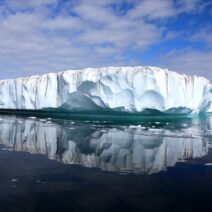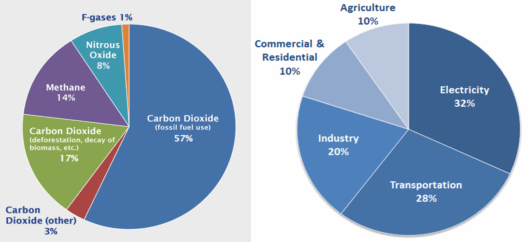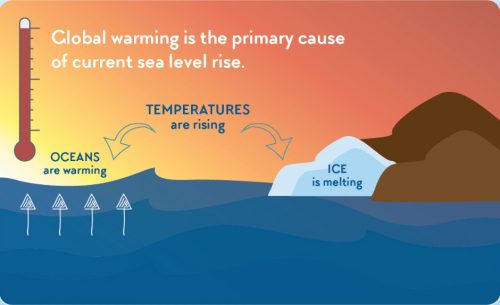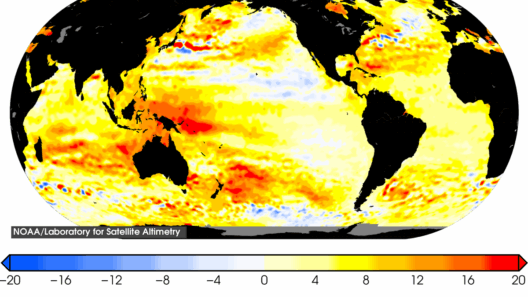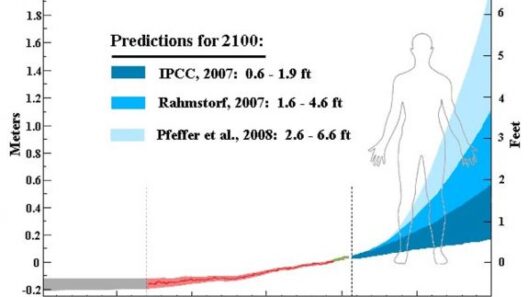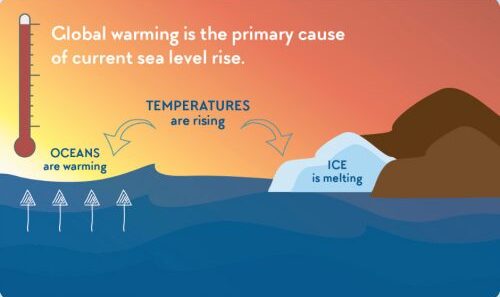As we traverse the intricate tapestry of our planet’s climate, one cannot help but feel the powerful currents that bind together the various phenomena influencing our water bodies. Rising sea levels and the tumultuous forces of tsunamis are often regarded as separate entities, yet they share an undercurrent of connection that merits exploration. Delving into the depths of this relationship uncovers layers of complexity that elucidate our understanding of both dangers and their interplay with human existence.
Understanding the mechanics of the oceanic ballet requires an astute appreciation of both rising sea levels and the genesis of tsunamis. Many assume that heightened sea levels are intrinsically linked to the emergence of tsunamis. However, this is a misconception that can lead to a simplistic interpretation of how natural systems coexist. The dance of the ocean is enigmatic, and unraveling the threads connecting sea level rise to tsunami activity depicts a narrative far richer than a mere cause-and-effect scenario.
One must comprehend the broader context: global warming has become a double-edged sword that not only raises the oceans but also intensifies extreme weather patterns and geological activity. As the icy fulcrums of the polar regions melt, they send ripples across vast oceans, altering the gravitational pull of water and affecting coastline dynamics. This gradual upheaval is akin to the slow, inexorable rise of a massive tide. Sea level changes can exacerbate the vulnerable shorelines, making them more susceptible to erosion and other stressors that can trigger geological responses. However, this does not imply that rising sea levels directly conjure the cataclysmic waves commonly associated with tsunamis.
To clarify, tsunamis are predominantly generated by sudden disturbances of the sea floor, most notably through tectonic shifts that occur at fault lines, volcanic eruptions, or underwater landslides. When a tectonic plate buckles and shifts, it displaces a colossal volume of water, resulting in waves that can traverse oceans at terrifying speeds. These monstrous waves roll forward, gaining momentum as they approach the shore, where their energy culminates in devastating crests capable of inundating coastal regions—it is a crescendo of nature’s fury. Hence, the genesis of tsunamis lies in geological upheavals rather than the gradual rise in sea level.
Nevertheless, the relationship between increasing sea levels and tsunamis can be delineated through their shared impacts on coastal communities. Rising sea levels may not directly cause tsunamis, but they can amplify the effects of such events. As coastal areas become more inundated, the vulnerability to tsunami impacts escalates. The lower the elevation of a shoreline, the less buffer space there exists to absorb the immense power of a tsunami. Imagine a musician playing a stringed instrument: the higher the tension, the greater the chance of snapping a string when struck. In this analogy, the strings are the coastal environments, stretched thin by rising waters, threatening to fracture under sudden oceanic stressors like tsunamis.
The compounding nature of these factors invokes a pressing need for adaptive coastal management. Communities that exist in the throes of rising sea levels necessitate robust infrastructure to withstand the eventuality of tsunami waves. This dual challenge demands innovative strategies, such as reinforced levees, strategic relocation, and the incorporation of natural barriers like mangroves and coral reefs, which can dampen wave energy while fostering biodiversity. Here, adaptation becomes paramount: survival requires resilience against both gradual encroachment and sudden tumult.
Certain regions inhabited by indigenous populations exemplify the delicate equilibrium between respect for natural rhythms and the relentless advance of climatic change. These communities often possess a profound understanding of their environments, with traditional practices that emphasize ecological balance. They mirror the age-old wisdom of navigating treacherous waters while remaining anchored to the very substratum of their existence. Their stories provide a lens through which one can appreciate how rising sea levels can alter not only landscapes but also the very fabric of life along coastlines.
It is also critical to consider the psychological impact of impending threats like tsunamis, compounded by the creeping reality of rising sea levels. Coastal inhabitants, burdened with the weight of uncertainty about their future, carry a profound grief for precarious ecosystems and beloved locales sinking beneath the waves. This emotional turmoil can erode social cohesion, making it essential for effective communication and preparedness strategies to foster a sense of community resilience. The metaphor of a dam, holding back not only water but also fear, becomes an evocative illustration of the collective strength needed to withstand nature’s caprice.
In conclusion, while rising sea levels do not directly cause tsunamis, they serve to heighten the stakes in coastal areas, significantly amplifying the dangers those communities face as they confront both gradual and abrupt changes. The complexity of these interactions reveals the necessity for a multifaceted approach to understanding the interplay of natural forces that shape our world. Recognizing the connections between sea levels and tsunamis enables more informed decision-making, climate action, and community preparation—all essential elements in navigating the uncertain embers of our changing climate. As the tides continue to rise, it is incumbent upon us to remain vigilant, to understand these forces, and to cultivate resilience against the yawning depths of the unknown.


